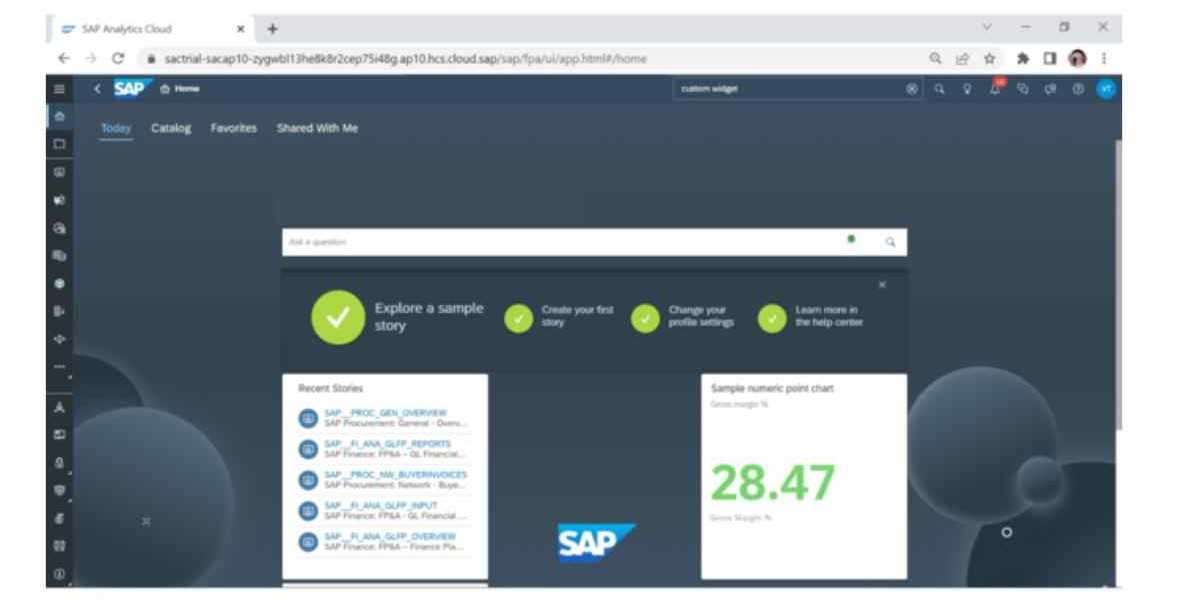In today’s fast-paced digital world, businesses need real-time insights to make informed decisions, and analytical applications have become indispensable tools in achieving this. To enhance the effectiveness of these applications, they must be user-friendly and provide relevant information clearly. SAP Analytics Cloud (SAC) offers a powerful solution for this need, particularly through its Custom Widget functionality, which significantly enhances the user experience.
SAP Analytics Cloud is a comprehensive platform that integrates enterprise planning, enhanced analytics, predictive analytics, and business intelligence into a single cloud-based system. This unified platform allows businesses to analyze, inquire, predict, plan, and report, providing a robust foundation for decision-making. One of its standout features is the Custom Widget functionality, which enables users to extend the default widget collection with custom-built widgets tailored to specific needs.
Custom widgets in SAC are particularly valuable when standard widgets do not meet all the requirements for user interface elements, data visualizations, or specific functionalities. These widgets can be created without the need for specialized software, though using a robust JavaScript text editor can streamline development as widgets become more complex. This flexibility is crucial for businesses with unique or advanced analytical needs.
The ability to create custom widgets within SAC transforms the way users interact with data. The platform's intuitive drag-and-drop interface allows users to effortlessly design charts, tables, and other visual elements while accessing data from various sources, including both SAP and non-SAP systems. This ease of use not only enhances the user experience but also ensures the accuracy and relevance of the data being analyzed.
One of the major benefits of integrating custom widgets into SAC is the development of dynamic and interactive dashboards. These custom widgets can include interactive charts that allow users to filter data, drill down into specific points, and explore information in multiple ways. This interactive capability facilitates a deeper understanding of data, enabling users to identify trends, patterns, and anomalies more effectively. Consequently, users can make more informed and actionable decisions, which is crucial for staying competitive in today’s market.
Creating custom widgets is straightforward with SAC’s drag-and-drop interface, which simplifies the process of developing visualizations. Users can utilize a wide range of built-in data visualization options, such as bar charts, line charts, scatter plots, and heat maps, to tailor visualizations to their specific data needs. This customization ensures that the visualizations are not only functional but also aligned with the specific requirements of the business.
Moreover, SAC fosters a collaborative environment by allowing users to share and reuse custom widgets across different teams and projects. This feature streamlines the creation and maintenance of analytics applications, ensuring consistency and quality across various analytical tasks. The cloud-based nature of SAC further enhances flexibility and scalability, allowing users to access analytics applications and data from anywhere, thereby reducing the complexity and cost associated with managing analytics infrastructure.
Real-time analytics is another significant advantage offered by SAC. By providing immediate access to data and insights, SAC enables businesses to make timely decisions, which is essential in a fast-moving business environment. The ability to act quickly on data-driven insights can be a game-changer, helping businesses adapt and respond to changing conditions more effectively.
To create and integrate custom widgets into SAC, users need to use web components, which involve creating unique HTML elements that do not interfere with the standard HTML Document Object Model (DOM). This is achieved through a shadow DOM that isolates the custom element’s styling and rendering from the rest of the page. Custom widgets are typically composed of resource files and a JSON file containing metadata about the widget. These files are then uploaded to the SAC platform, where they become available for use in analytic applications.
In summary, the Custom Widget functionality in SAP Analytics Cloud represents a significant advancement in the world of analytics. It allows users to create highly personalized and interactive dashboards that enhance data understanding and decision-making. By providing a flexible, user-friendly, and cloud-based solution, SAC empowers businesses to leverage real-time data effectively, making it an invaluable tool for modern analytics.














